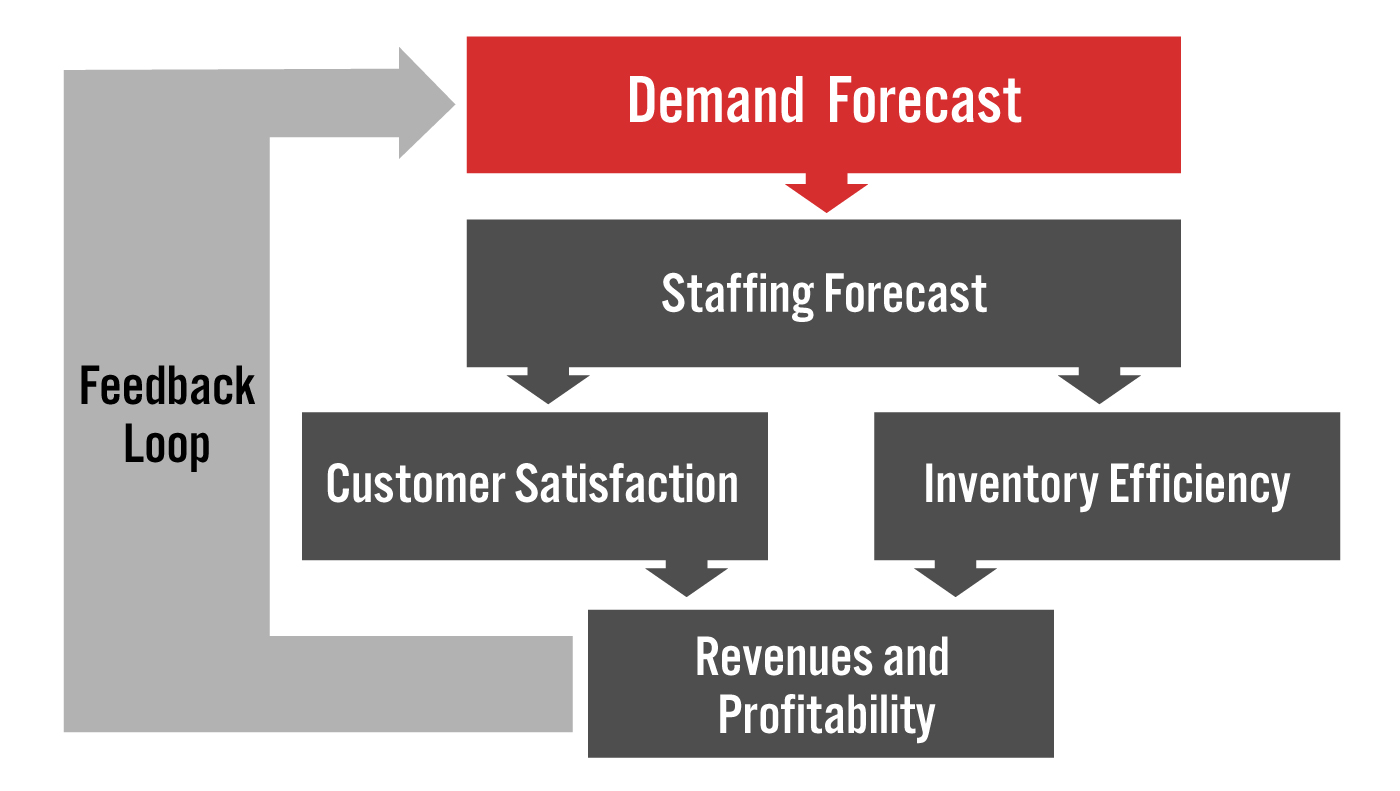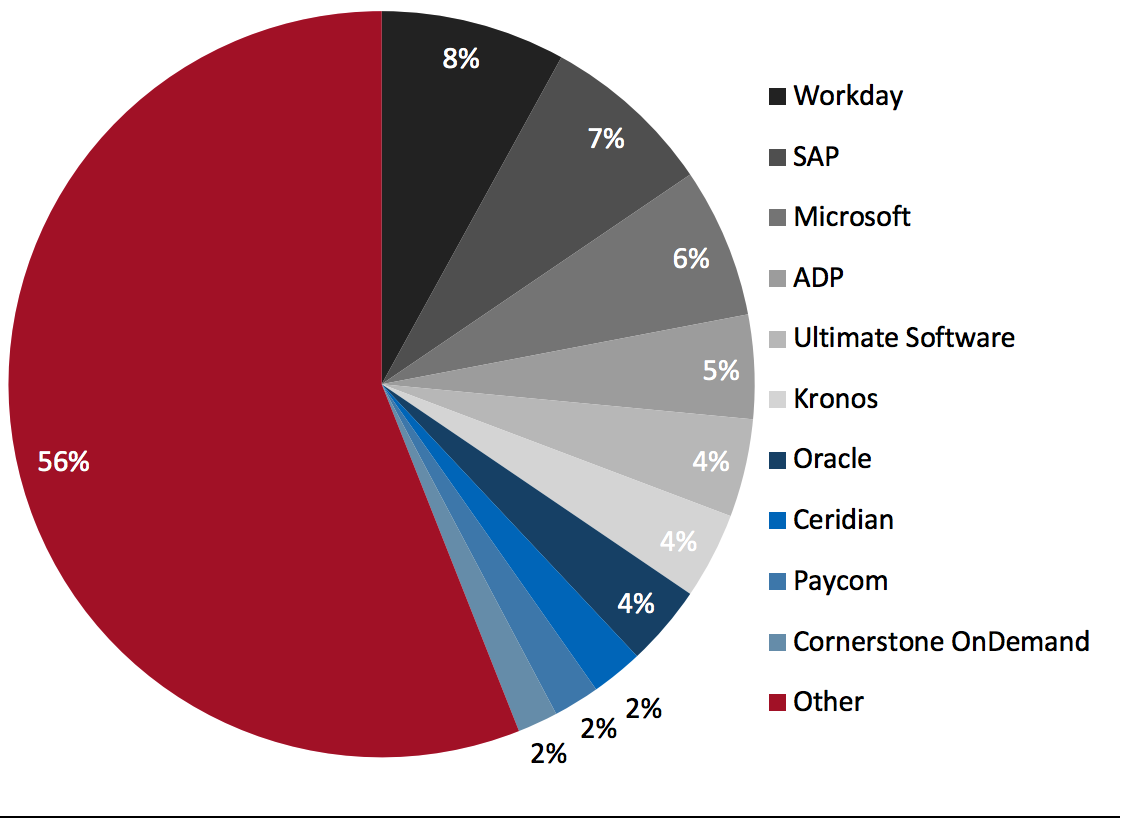
Nitheesh NH
What’s the Story?
This report discusses HCM (human capital management) software for retail, including its functionality and leading vendors.Why It Matters
Employees, in addition to inventory, are among the most valuable assets that a retailer possesses. Retail employees do more than just generate transactions: They are the ambassadors managing the relationship that the retailer has with its customers. As such, they are responsible for the look of the store and can create real customer intimacy, creating and building a personal relationship—something that is an advantage for physical retail over e-commerce. Managing and developing employees is challenging, reflecting the complexity of modern life. HCM software offers organizational and optimization solutions to address specific challenges related to staffing that are unique to retail, including high turnover, the management of a large percentage of part-time workers, and seasonality of demand. Retail has one of the highest employee turnover rates (after fast-food restaurants)—with an average turnover rate of 76% in 2019 for part-time, hourly employees, according to organizational consulting firm Korn Ferry. Each new hire and departure adds expense for the retailer, across onboarding, training and offboarding. The estimated cost to replace a high-turnover job can amount to $3,328, according to health-benefit software vendor PeopleKeep, which can quickly add up to a significant expense when the turnover rate is high. Other challenges, including shortages of talent, demographic shifts and volatility in labor availability, emphasize the importance of companies being able to manage the acquisition, retainment and sourcing of new employees. With enterprises adopting platforms to manage the customer experience, the concept of employee experience management has emerged as a way to manage and maximize employees’ contributions while at the company. HCM software aims to assist retailers and other enterprises in getting a handle on, and reducing the complexity associated with, managing employees.HCM Software: A Deep Dive
HCM software supports companies in managing the complexity of the modern workforce and automating much of the tedious paperwork associated with employee onboarding and development. Functions of HCM Software The classical functions of HCM software are as follows:- Recruiting—including applicant tracking
- Onboarding—employee information
- Performance management—assessment, goals, succession
- Core HR—administration, compensation and payroll and benefits
- Workforce management—scheduling, time, activity and attendance/absence
- Training—including (e)learning
- High turnover
- Many part-time employees
- Seasonal changes in demand (i.e., higher demand during the holidays)
- Other swings in demand—e.g., due to consumers stocking up on staples and safety products during the pandemic
- Long-term changes due to store closures and the encroachment of e-commerce
- On the top level, the demand forecast has implications for staffing and inventory levels.
- Staffing and inventory levels and have implications for customer satisfaction and inventory efficiency.
- Ultimately, customer satisfaction and inventory efficiency drive revenues and profitability, and the feedback loop incorporating these metrics is used to create the next demand forecast.
Figure 1. Flowchart of Relationships Between Demand Forecasting, Staffing/Inventory and Financial Results [caption id="attachment_121425" align="aligncenter" width="700"]
 Source: Coresight Research[/caption]
HCM in the Age of Covid-19
While managing a modern retail operation during normal times is challenging enough, the Covid-19 pandemic has made managing staffing much more complicated for retailers, with stores closing temporarily or even permanently and employees being unable to report to work due to illness, quarantine or relocating out of the region.
Retailers and other enterprises have increasingly moved to more decentralized working models, with many functions moving to the cloud and remote communication/collaboration options being employed, such as videoconferencing via Zoom and Microsoft Teams. Other platforms such as Slack have created message boards as a medium for management and employee communication.
Leading HCM Software Vendors
HCM is a category of enterprise software, which also includes enterprise resource planning (ERP) and customer relationship management (CRM) software.
The global HCM market is large but fragmented, estimated at more than $31 billion in 2020 and growing at a low-single-digit rate, according to market research firm Apps Run The World. Figure 2 shows the market share for the top 10 HCM vendors in 2019, which accounted for nearly half of the market (44.2%). There are another 230 HCM technology companies and businesses, according to the Society for Human Resource Management’s Human Resource Vendor Directory, demonstrating the high degree of market fragmentation.
Source: Coresight Research[/caption]
HCM in the Age of Covid-19
While managing a modern retail operation during normal times is challenging enough, the Covid-19 pandemic has made managing staffing much more complicated for retailers, with stores closing temporarily or even permanently and employees being unable to report to work due to illness, quarantine or relocating out of the region.
Retailers and other enterprises have increasingly moved to more decentralized working models, with many functions moving to the cloud and remote communication/collaboration options being employed, such as videoconferencing via Zoom and Microsoft Teams. Other platforms such as Slack have created message boards as a medium for management and employee communication.
Leading HCM Software Vendors
HCM is a category of enterprise software, which also includes enterprise resource planning (ERP) and customer relationship management (CRM) software.
The global HCM market is large but fragmented, estimated at more than $31 billion in 2020 and growing at a low-single-digit rate, according to market research firm Apps Run The World. Figure 2 shows the market share for the top 10 HCM vendors in 2019, which accounted for nearly half of the market (44.2%). There are another 230 HCM technology companies and businesses, according to the Society for Human Resource Management’s Human Resource Vendor Directory, demonstrating the high degree of market fragmentation.
Figure 2. HCM Market Share for Top 10 Vendors, 2019 [caption id="attachment_121426" align="aligncenter" width="700"]
 Source: Apps Run The World, November 2020[/caption]
Figure 3 shows the revenue growth rates for the top 10 HCM software vendors during 2018–2019, which averages 20.6%, indicating that the largest vendors are gaining even greater share of the market.
Source: Apps Run The World, November 2020[/caption]
Figure 3 shows the revenue growth rates for the top 10 HCM software vendors during 2018–2019, which averages 20.6%, indicating that the largest vendors are gaining even greater share of the market.
Figure 3. HCM Revenue Growth for Top 10 Vendors in 2018–2019 [caption id="attachment_121427" align="aligncenter" width="700"]
 Source: Apps Run The World, November 2020/Coresight Research[/caption]
We summarize the offerings of the leading HCM software vendors in Figure 4. The list comprises a diverse mix of companies:
Source: Apps Run The World, November 2020/Coresight Research[/caption]
We summarize the offerings of the leading HCM software vendors in Figure 4. The list comprises a diverse mix of companies:
- ERP software vendors—Microsoft, Oracle and SAP
- Pure-play HCM software vendors—Cornerstone, Paycom, UKG and Workday
- Traditional HR/payroll companies—ADP and Ceridian
Note: UKG (Ultimate Kronos Group) is the result of the merger of Ultimate Software and Kronos, which merged in April 2020. Source: Company reports
HCM Innovators There are several innovators engaged in developing HCM software, including the following:- Humanity (acquired by TimeClock Plus) provides a workforce management solution including forecasting, compliance, auto and flex scheduling and real-time schedule updates. (Humanity offers a cloud-based employee scheduling platform.)
- Quinyx offers artificial intelligence (AI)-driven workforce management tools including scheduling, time and attendance, employee engagement and forecasting for simplifying compliance.
- Sage HR (formerly Cake HR) manages recruitment, core HR, leave, performance, shift scheduling, timesheets and expenses.
- Theatro offers a suite of voice-powered workforce information apps and an AI-powered intelligent assistant for enterprise communications.
- Tulip provides a platform that aims to augment the skills of manufacturing workers to help them be more productive and make fewer errors.
- Workfront (acquired in November 2020). A work-management platform for marketers with more than 3,000 customers and 1 million users. Marketers ruse the platform to manage content, plan and track marketing campaigns, and execute complex workflows across teams.
- Work.com. Announced in May 2020 and created with an ecosystem of partners, this platform was launched to provide tools for helping employers manage the return of employees back to work following shutdowns due to Covid-19. Its functions include the following:
- Command center. To bring together trusted data from diverse sources and disseminate important employee communications at scale.
- Contact tracing. To manually trace health and relationship contacts in a safe and private manner, by collecting data from individuals and creating visual maps of contacts and locations.
- Emergency response management. A suite of products to manage all types of emergencies, deliver care to those affected and allocate resources and services.
- Employee wellness. Gather the data needed to monitor and analyze employee and visitor health and wellness, including employee health surveys, monitoring wellness trends and use data for decision-making.
- Shift management. To orchestrate the eventual return of employees to the office through shift management capabilities to help reduce office density.
- myTrailhead. For employee training and compliance with new safety policies.
- Volunteer and grant management. To help organizations fulfill their relief goals with tools for volunteer coordination and stream grant-making.
- Slack (proposed acquisition announced in December 2020). Slack is an enterprise-grade, channel-based messaging platform for enterprise communication and collaboration, and Salesforce plans to integrate the two companies to create a “single source of truth” and a unified platform for connecting employees, customers and partners with each other within their existing workflows.
- Reflexis Systems (acquired in July 2020) provides intelligent workforce management, execution and communication solutions for organizations in the retail, foodservice, hospitality and banking industries. The Reflexis ONE product enables organizations to simplify work for their front-line associates by giving them a single place to view all their tasks and work schedules. Tasks can be routine (e.g., cleaning), company generated (such as an in-store promotions) or generated by the system in real time (e.g., shelf replenishment). Schedules are derived from several inputs, such as associate preferences, expected customer demand and task requirements, and the platform ensures that associates can complete all their tasks while delivering a good customer experience.
- Zebra Prescriptive Analytics uses AI/machine learning (ML) to continuously monitor a retailer’s data, including labor efficiency, policy compliance, upselling efficacy and other metrics—and develops insights that are directed to the right employee. For example, the platform identified the associates at one fashion retailer who were the most, and least, successful at upselling based on the number of single-item transactions processes and directed store managers to schedule employees from both groups to work together. This peer-to-peer cross-training significantly raised revenue from improved upselling skills.
- Workforce Connect provides customized enterprise communication with employees via voice or secure text messaging, enabling workers to use the methods of communication they are more comfortable with on a single device.
What We Think
Employees are as important for retailers and brands as the products themselves, and the employee experience has significant effects on the company’s customer satisfaction and operations, which have a direct and indirect impact on the company’s sales and profitability over both the short and long term. Implications for Brands/Retailers- Brands and retailers can use HCM software to manage the administration of their staff and to align staffing with anticipate demand.
- They can also consider viewing employee experience on par with customer experience due to the high cost of employee turnover and the effects of employee satisfaction on customer satisfaction, as employees represent the retailer to its in-store customers.
- HCM software is a fragmented, though consolidating, market, offering opportunities for vendors of many sizes and focus areas.
- There are opportunities to leverage the insights of AI/ML to further improve employee experiences, although this technology can also be misused to degrade employee experiences.